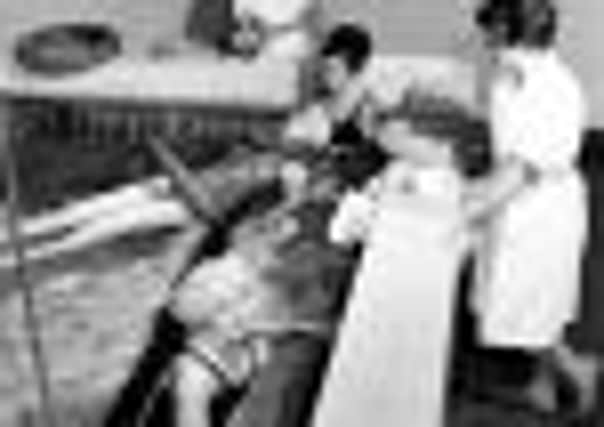Spa bosses test water with bid to tap your memories


There were some who found the sulphurous waters invigorating while others were less keen, turning their noses up at the malodorous qualities that helped give the town international recognition dubbing them “the stinking spaw” because of their acquired smell.
While many came to drink the water, others underwent a range of treatments, which included peat and saline sulphur baths, which held the promise to cure a range of ills from gout to rheumatism.
Advertisement
Hide AdAdvertisement
Hide AdAlkaline sulphur baths were mainly used for skin diseases, and alkaline sulphur electric baths, with a range of currents used to treat muscle weakness.
Those who travelled to the developing spa town to take the waters believed their aches, pains and other ailments would be eased away.
Belief in the benefits lasted well into modern times and efforts are now being made to record memories of Harrogate’s 20th century spa history before they are lost forever.
Bosses at the Royal Pump Room Museum are keen to identify the women in one particular black and white photograph showing a group taking the waters. They are wearing swimsuits as two others in uniforms look on.
Advertisement
Hide AdAdvertisement
Hide AdDiane Taylor, audience development officer, for the Royal Pump Room Museum, asks: “Can you help us identify the women in this photo, taken at the hydrotherapy pool of the Royal Baths in 1960?
“Were you a spa visitor? Did you or a relative work in the hotels or give treatments?”
She added: “Let us discover your stories of the people that made Harrogate’s twentieth century history before memories and the treasured objects are forgotten or lost forever.”
The museum is keen to hear from people who have photographs or objects telling the story of Harrogate during the Second World War and family memories of film from the sixties, seventies or eighties.
Advertisement
Hide AdAdvertisement
Hide AdThe Royal Pump Room was built by Isaac Shutt in 1842 to provide shelter for the town’s affluent visitors as they took the famous waters.
At its peak, each summer the pump room attracted some 15,000 people. Among its most famous visitors was Tsarina Alexandra of Russia in 1911.
An annexe was added in 1913 to cater for the expanding visitor numbers and the popularity of the Royal Pump Room continued to soar – in 1842 it had 3,778 patrons, in 1867, 11,626, and in 1925, 259,000
After the Second World War, however, when priorities of life moved to harsher realities the Pump Room attracted fewer visitors and with the emergence of the National Health Service the “curing” waters were not taken as frequently and eventually the doors were closed.
Advertisement
Hide AdAdvertisement
Hide AdIn 1953, however, the Royal Pump Room was reopened as a museum.
To help compile a fuller archive of its 20th century history, people are asked to bring along photographs, film and objects relating to Harrogate’s past for the museum’s curators to see and document on Saturday between 11am and 3pm at the Mercer Art Gallery.
Vouchers for free entry to the museum on November 10 will be given out to those taking part, to discover the exhibition Harrogate for Health and Happiness: A Spa Town in the 20th Century.
It features 1930s film footage of people taking the sulphur water and taking the treatments on offer at the Royal Baths, including peat baths and being locked in a heat box.
Advertisement
Hide AdAdvertisement
Hide AdOn Saturday, Harrogate Theatre ran a similar event, with the aim of capturing stories and memories to feed into the content of the Youth Theatre’s Pumped! show, which will be performed at the Royal Pump Room Museum on December 1 and will tell the story of those who shaped the spa town we know today.
Information collected will be shared by the theatre and museum and recorded in word as well as with audio and video equipment.
For tickets for Pumped! call 01423 502116.